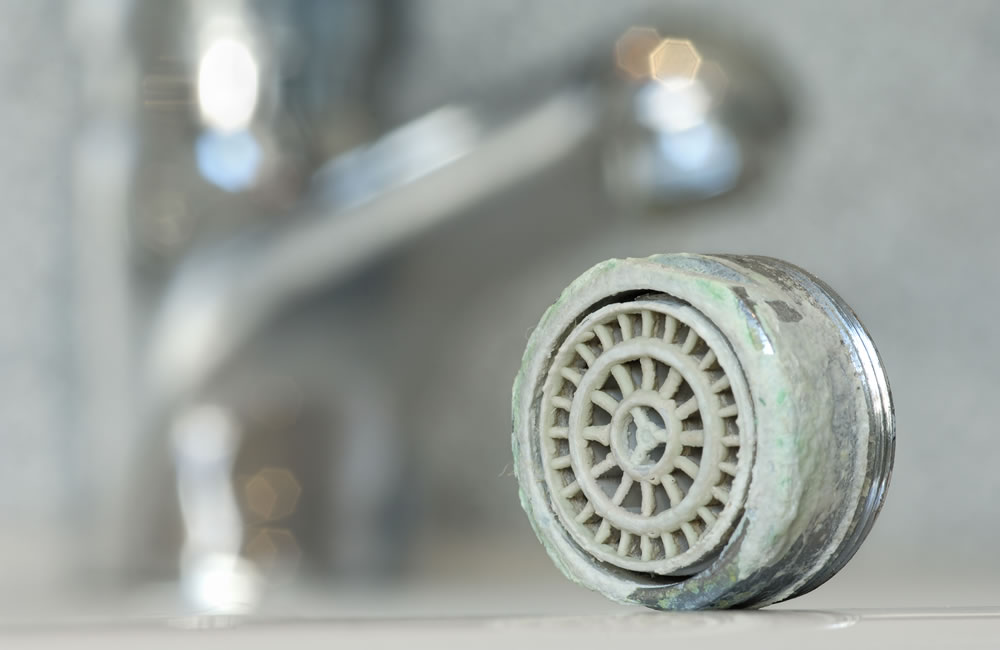
How To Remove Limescale
Effective Ways To Remove Limescale Buildup
Learn all about limescale, hard water and how to eliminate them.
Unsightly in the short run and potentially damaging in the long run, limescale can be tough to eliminate. Here are the best strategies to tackle limescale and descale your bathroom and appliances.
What Is Limescale?
Limescale, also known as calcium carbonate, is a white or off-white deposit that forms when “hard water” evaporates, leaving behind minerals such as calcium and magnesium.
Hard water is water that contains high levels of dissolved minerals, specifically calcium and magnesium. These minerals are naturally occurring in the earth’s crust and can enter water sources through various means, such as underground aquifers or mineral deposits.
When heated, calcium carbonate and magnesium carbonate are removed from the water and produce a scale buildup in our household appliances.
Limescale buildup can occur in various household appliances, fixtures, and surfaces, including:
- Kettles
- Coffee makers
- Dishwashers
- Sinks
- Faucets
- Toilets
- Showerheads
- Taps
- Baths
- Tile and grout
- Glass shower doors
What Does Limescale Do?
Limescale can cause a white/off-white or brownish buildup on and around faucets, shower fixtures, sinks, inside kettles and hot water heaters. Not only is it unsightly, it affects performance. A large scale buildup slows the heating process and requires more energy to heat water.
It clogs up the little holes in shower heads, reducing water power/pressure.
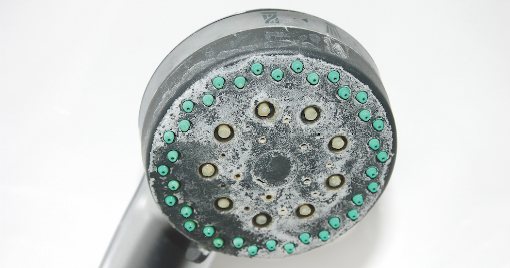
A buildup of limescale in electric kettles, washing machines, and hot water heaters affects efficiency and energy usage. Water heaters with large accumulations of mineral buildup will have shorter life spans. Scale deposits also corrode and plug plumbing fixtures.
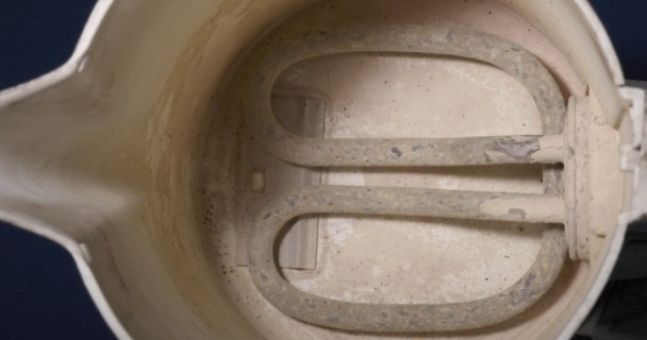
In short, limescale buildup can lead to:
- Reduced water flow and pressure
- Increased energy bills
- Decreased appliance lifespan
- Unpleasant taste and odor in water
- Stains and discoloration on surfaces
- Clogged drains and pipes
Where Do We Find Limescale At Home?
Limescale In The Kitchen
Here are common places where you might find limescale in your kitchen:
Kitchen:
- Kettles: Limescale buildup is common in kettles, especially if you use hard water. Check the element, lid, and spout for white or off-white deposits.
- Coffee makers: Descaling your coffee maker regularly is crucial to prevent limescale buildup, which can affect the taste of your coffee.
- Dishwashers: Check the dishwasher’s filter, spray arms, and walls for limescale deposits.
- Sinks: Limescale can appear as white or off-white stains or rings around the drain, faucet, or sink basins.
- Faucets: Limescale buildup can occur on faucet aerators, screens, and around the handles.
- Teapots: Like kettles, teapots can accumulate limescale, especially if you use hard water.
- Pots and pans: If you use hard water for cooking, limescale can deposit onto your cookware, especially aluminum or copper pans.
- Water filters: If you have a water filter or purification system, check for limescale buildup, which can reduce the filter’s effectiveness.
- Ice makers: Limescale can accumulate in ice makers, affecting the taste and quality of the ice.
- Drains: Limescale can clog drains over time, especially if you have a garbage disposal.
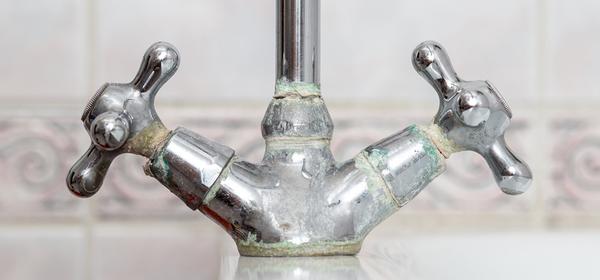
Limescale In The Bathroom
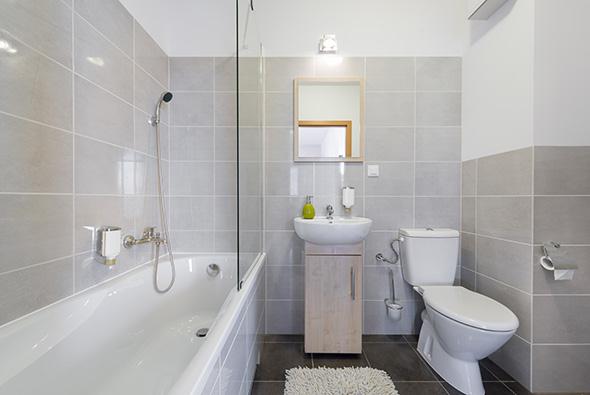
Here are common places where you might find limescale in your bathroom and toilet:
Bathroom:
- Showerheads: Limescale buildup can reduce water pressure and flow.
- Faucets: Check the aerators, screens, and around the handles for limescale deposits.
- Sinks: Limescale can appear as white or off-white stains or rings around the drain, faucet, or sink basins.
- Taps: Limescale buildup can occur on the taps, especially if you have a mixer tap.
- Bath: Limescale can deposit onto the bath surface, especially around the taps and drain.
- Tile and grout: Limescale can seep into the grout lines and leave white or off-white stains.
- Glass shower doors: Limescale can leave streaks and stains on the glass.
Toilet:
- Toilet bowl: Limescale can deposit onto the bowl, especially under the rim and around the drain.
- Toilet tank: Check the inside of the tank for limescale buildup, which can affect flushing performance.
- Toilet fill valve: Limescale can accumulate in the fill valve, reducing water flow.
- Toilet flapper: Limescale can deposit onto the flapper, affecting proper flushing.
Other areas:
- Water heaters: Limescale can build up inside water heaters, reducing efficiency and lifespan.
- Drains: Limescale can clog drains over time, especially if you have a lot of hair or soap scum buildup.
How To Remove Limescale?
Here are some effective ways to remove limescale:
1. Vinegar and Water
Mix equal parts of white vinegar and water in a spray bottle. Spray the solution onto the limescale-stained area and let it sit for 30 minutes. Scrub with a non-abrasive cloth or sponge and rinse with warm water.
2. Lemon Juice and Salt
Cut a lemon in half and squeeze the juice onto the limescale stain. Sprinkle a small amount of salt onto the juice and let it sit for 30 minutes. Scrub with a non-abrasive cloth or sponge and rinse with warm water.
3. Baking Soda and Water
Mix baking soda and water to form a paste. Apply the paste to the limescale-stained area and let it sit for 30 minutes. Scrub with a non-abrasive cloth or sponge and rinse with warm water.
4. Descaling Solution
Use a commercial descaling solution, following the manufacturer’s instructions. These solutions are specifically designed to remove limescale and mineral deposits.
5. CLR (Calcium, Lime, and Rust Remover)
Apply CLR to the limescale-stained area, let it sit for 30 minutes, and then scrub and rinse with warm water.
Remove Limescale With Vinegar In The Bathroom
Sinks, Showers, Bathtubs, Glass Shower Doors, Tiles & Grout
Spray regularly with a diluted vinegar.
Leave on for a few minutes before rinsing off.
Showerheads
Soak the shower head in a solution of 1 part water and 1 part vinegar.
Scrub off any remaining deposits using a toothbrush.
If necessary, use a needle or pin to poke deposits out of the holes.
Faucets, Taps, Shower Mixers
Fill a plastic bag of cotton wool soaked in vinegar.
Place the bag over the faucet/tap, making sure the vinegary cotton wool touches the affected parts.
Tie with a rubber band and leave overnight.
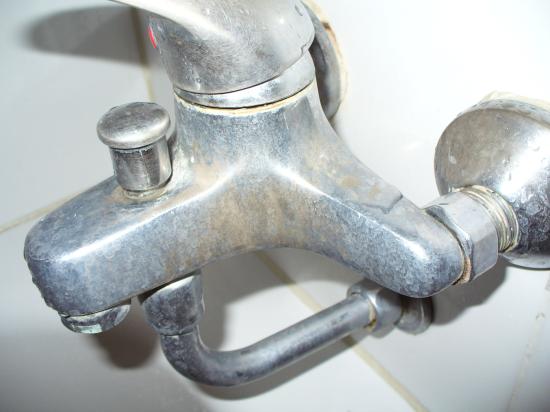
As limescale is mostly calcium, which is an alkali, it needs an acid to dissolve it. Though there are many efficient descaling products on the market, vinegar is still one of the cheapest and simplest solution.
Do note that though vinegar is an effective limescale remover, it is still an acid. If used too strong, or for too long, the acid will eat into the surface of an enamel sink or bathtub – causing it to look dull and making it less resistant to dirt.
Possible Solutions To Soften Hard Water
Softening hard water involves removing or reducing the minerals that cause water to be hard, primarily calcium and magnesium.
You can install a water softener system, designed to eliminate hard water, as well as the build up of limescale. Extend the life of your household’s plumbing and appliances by getting rid of the calcium and magnesium ions, salt and sediments in your water supply.
Alternatively, you may want to use water softening agents in your washing machines and dishwashers. Hard water problems can be reduced by using detergents that include water softening chemicals in their formulation.
Some types of chemicals can be added to hard water to reduce the negative effect from calcium and magnesium.
Regular Cleaning And Descaling
Regular cleaning and descaling can help prevent limescale buildup. This can help maintain the efficiency and appearance of your fixtures, household appliances and surfaces, and increase their lifespan.
However if your fixture or appliance’s performance and efficiency are significantly impacted by limescale buildup, replacement may be necessary. Should you need professional help in replacing any of your bathroom or kitchen fixture, feel free to contact our trusted plumbers for reliable service.
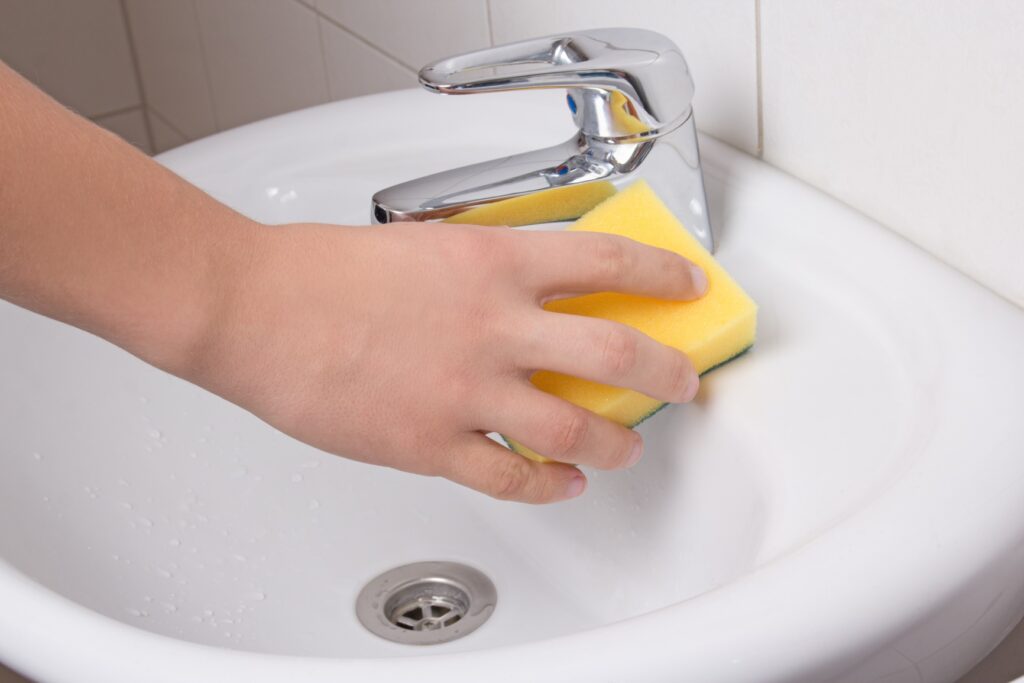

Get In Touch
Contact us today for dependable solutions to all your plumbing and electrical needs.